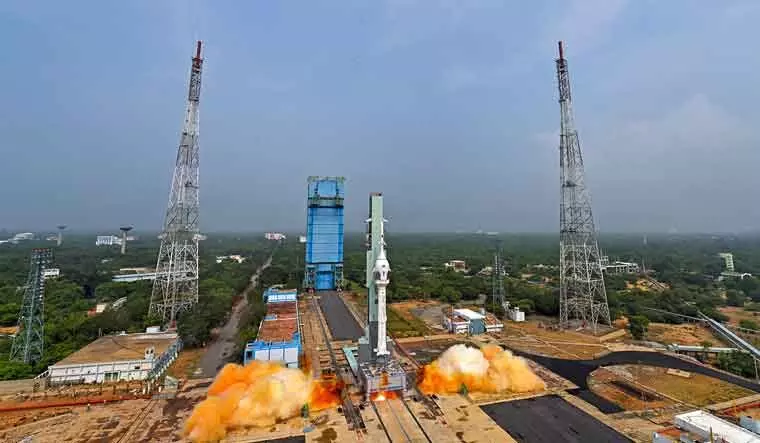Flight of aspirations

The Indian Space Research Organisation (ISRO) is consistently surpassing milestones and setting new standards in space exploration. From the historic landing of Chandrayaan-3 on the moon's South Pole to the advancements made towards the Gaganyaan Mission, India's journey into the cosmos is a testament to ISRO’s rising stature. On August 23, the entire nation rejoiced as Chandrayaan-3 accomplished an extraordinary feat, becoming the first space mission to successfully land on the moon's South Pole. The excitement of this remarkable success was still fresh when ISRO swiftly pivoted to its next endeavour — the Aditya L1 Mission. Now, the spotlight is firmly on ISRO's latest milestone. On October 21, ISRO successfully tested its human space flight mission after initial hiccups. This first uncrewed developmental flight of Gaganyaan, designated TV-D1, is a testament to India's ambition and determination to join the elite club of nations with human spaceflight capabilities. ISRO's Chairman, S Somnath, has emphasised the importance of these tests in building confidence in the organisation's ability to safely send humans into orbit. The Gaganyaan Mission is a testament to India's audacious pursuit of space exploration, aiming to send Indian astronauts, also known as ‘Vyomanauts’, into space. If successful, it will make India the fourth country globally to achieve this extraordinary feat. Originally envisaged to send a three-member crew into space for five to seven days by 2022, coinciding with India's 75th year of independence, the timeline has been adjusted to 2025 due to disruptions caused by the COVID-19 pandemic and ISRO's unwavering focus on safety. This delay underscores ISRO's commitment to prioritising safety over haste. ISRO's dedication to safety, even if it comes at a considerable expense, deserves applause. It demonstrates the agency's far-sightedness and pragmatism, qualities that have consistently driven its success. With each milestone achieved and test completed, ISRO's ambitions continue to soar higher. After successful preliminary tests, the next significant step in this incredible journey will be the planned launch of a humanoid in an unmanned Gaganyaan spacecraft, slated for the coming year. This humanoid, named Vyommitra, was unveiled by ISRO in 2019, depicting the agency's innovative approach to testing and preparing for human spaceflight. Finally, three astronauts will be sent into orbit, orbiting at a height of 400 km, for a 3-day mission, after which they will be safely brought back to Earth. The successful completion of these missions will not only make India a part of the select few nations capable of human spaceflight but will also open the floodgates for further space exploration. ISRO's ambitious vision extends to 2035 when India plans to establish its very own space station, tentatively named the 'Bharatiya Antariksha Station' or the Indian Space Station. This project reflects India's determination to play a central role in shaping the future of space exploration. Looking further into the future, India aspires to send its first astronaut to the Moon by 2040. ISRO's future plans also include missions to Venus and Mars, with the Venus Orbiter Mission and Mars Lander Mission on the horizon. What distinguishes ISRO's achievements and goals is the pragmatism and patience with which they are pursued. Every step in the journey is taken with an unwavering commitment to safety and cost-efficiency. This approach, driven by a pragmatic assessment of challenges and a deep understanding of the importance of each mission's success, has set ISRO apart as a world-class space agency. As we witness India's space sector grow by leaps and bounds, crossing milestones that place it among the best in the world, we cannot help but feel a sense of pride and excitement. ISRO's accomplishments serve as an inspiration, a testament to what a nation can achieve when it sets its sights on the stars. The entire nation eagerly awaits the historic moment when Indian astronauts take that giant leap into space. Until then, we celebrate each milestone, knowing that with ISRO at the helm, the sky is not the limit—it's just the beginning.



